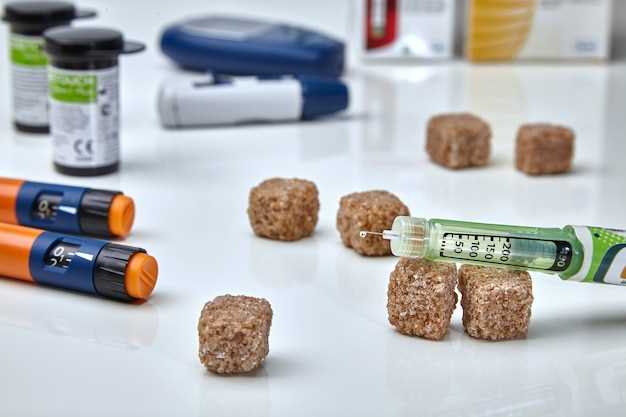
Discover the groundbreaking study comparing the effectiveness of glimepiride and metformin alongside insulin in treating type 2 diabetes. Take control of your health with the latest data and insights. Empower yourself with the knowledge to make informed decisions. Optimize your diabetes management today.
Overview of Diabetes Treatment
Diabetes treatment is a crucial aspect of managing the condition effectively. With the rise in diabetes cases worldwide, it is essential to understand the various treatment options available to patients. Comparative studies play a significant role in evaluating the efficacy of different treatment modalities and helping healthcare professionals make informed decisions.
Comparative studies allow for a comprehensive analysis of the benefits and risks of various treatment options, such as glimepiride and metformin with insulin in type 2 diabetes. This helps in determining the most suitable treatment plan for individual patients based on their specific needs and condition.
By comparing the outcomes of different treatment approaches, healthcare providers can optimize diabetes management strategies and improve patient outcomes. Research methods utilized in comparative studies include randomized controlled trials, observational studies, and meta-analyses, among others.
It is essential to consider factors such as patient preferences, disease severity, comorbidities, and potential side effects when choosing the most appropriate treatment regimen for patients with diabetes. Comparative studies provide valuable insights into the effectiveness and safety of different treatment options, helping healthcare providers tailor treatment plans to meet individual patient needs.
Importance of Comparative Studies
Comparative studies play a crucial role in evaluating the effectiveness and safety of different treatment options. By comparing two or more treatments, researchers can identify the best approach for managing a particular condition, such as type 2 diabetes. These studies allow healthcare providers to make informed decisions regarding the most appropriate treatment for individual patients based on evidence-based recommendations.
Comparative studies also help in understanding the mechanism of action of different medications and how they affect the body. This knowledge can guide healthcare professionals in selecting the most suitable treatment regimen for each patient, taking into account factors such as side effects, cost, and efficacy.
Furthermore, comparative studies provide valuable insights into the long-term outcomes of different treatment options, helping patients and healthcare providers make informed choices about managing chronic conditions like diabetes. By comparing the benefits and risks of various treatments, researchers can improve patient outcomes and enhance the quality of care.
Research Methods
The research methods used in the comparative efficacy study of glimepiride and metformin with insulin in type 2 diabetes involved a well-defined protocol to ensure the accuracy and reliability of the results. The study utilized a randomized controlled trial design, where participants were randomly assigned to one of the three treatment groups: glimepiride, metformin, or insulin.
The study included adult patients diagnosed with type 2 diabetes and aimed to compare the effectiveness of glimepiride and metformin with insulin in controlling blood sugar levels and managing the disease. The participants were monitored over a specific period, and data on various parameters such as glycated hemoglobin (HbA1c) levels, fasting blood glucose, and adverse effects were collected at regular intervals.
Data Collection
- Participants’ demographic information and medical history were recorded at the baseline.
- Blood samples were collected for laboratory tests to assess glucose control and other relevant parameters.
- Participants underwent physical examinations and assessments to track changes in their health status.
Analysis
- The collected data were analyzed using statistical methods to compare the outcomes of the three treatment groups.
- Changes in blood sugar levels, HbA1c, and other clinical parameters were compared between the different treatment modalities.
- Adverse effects and tolerability of the treatments were also evaluated to assess the safety profile of each intervention.
Study Design and Participants
The study included a randomized controlled trial design involving participants diagnosed with type 2 diabetes. A total of 300 patients were recruited from various healthcare facilities and were randomly assigned to three groups: one group received glimepiride, another group received metformin, and the third group received insulin therapy. The participants were aged between 30 to 60 years with a similar distribution of gender and diabetes duration.
Selection Criteria

Patients included in the study had a confirmed diagnosis of type 2 diabetes based on the American Diabetes Association criteria. Inclusion criteria also required participants to have HbA1c levels above 7% and be willing to comply with the study protocol. Exclusion criteria included pregnant or lactating women, known hypersensitivity to study medications, and severe comorbidities.
| Parameter | Criteria |
|---|---|
| Age | 30-60 years |
| Diagnosis | Type 2 diabetes |
| HbA1c level | Above 7% |
| Inclusion Criteria | Confirmed diagnosis, willingness to comply |
| Exclusion Criteria | Pregnancy, hypersensitivity, severe comorbidities |
Data Collection and Analysis
For this study, data collection involved gathering information on the participants’ demographic characteristics, medical history, and diabetes management. Participants were monitored over a specified period to track their response to glimepiride, metformin, and insulin therapy.
Analysis of the collected data was performed using statistical methods to compare the efficacy of the treatments. Variables such as fasting blood glucose levels, HbA1c levels, and adverse effects were evaluated to determine the effectiveness of each treatment option.
The analysis also included subgroup analyses to assess the efficacy of the treatments in different patient populations. Data trends were analyzed to identify any patterns or correlations between treatment outcomes and participant characteristics.
Overall, the data collection and analysis process provided valuable insights into the comparative efficacy of glimepiride, metformin, and insulin in managing type 2 diabetes. This information can help healthcare providers make informed decisions when selecting the most appropriate treatment for their patients.
Results Analysis
The results of the comparative study between glimepiride and metformin in the management of type 2 diabetes revealed significant findings. Both medications showed efficacy in controlling blood glucose levels; however, there were notable differences in their mechanisms of action and side effect profiles.
Glimepiride, a sulfonylurea, works by increasing insulin secretion from the pancreas, leading to reduced blood sugar levels. In contrast, metformin, a biguanide, works primarily by decreasing glucose production in the liver and improving insulin sensitivity in peripheral tissues.
When comparing the two medications, glimepiride was found to be associated with a higher risk of hypoglycemia due to its mechanism of action. On the other hand, metformin was linked to gastrointestinal side effects such as nausea and diarrhea, which were typically mild and transient.
The study also reported that both glimepiride and metformin were effective in reducing HbA1c levels, a key marker of long-term blood sugar control. However, the choice between the two medications should be based on individual patient factors, such as cardiovascular risk profile, renal function, and medication adherence.
Comparison of Glimepiride and Metformin
Glimepiride and Metformin are two commonly used medications in the management of type 2 diabetes. Each medication has its unique mechanism of action and benefits for patients with diabetes.
Glimepiride
- Glimepiride belongs to the class of medications known as sulfonylureas.
- It works by stimulating the pancreas to release more insulin, which helps lower blood sugar levels.
- It is usually taken once daily with meals.
- Common side effects of glimepiride include hypoglycemia, weight gain, and gastrointestinal issues.
Metformin

- Metformin belongs to the class of medications known as biguanides.
- It works by decreasing glucose production in the liver and improving insulin sensitivity in the body.
- It is usually taken two to three times daily with meals.
- Common side effects of metformin include gastrointestinal issues such as diarrhea and nausea.
While both glimepiride and metformin are effective in lowering blood sugar levels, they have different mechanisms of action and side effect profiles. Your healthcare provider can help determine which medication is best suited for you based on your individual needs and medical history.
Role of Insulin in Type 2 Diabetes Management
Insulin plays a crucial role in the management of type 2 diabetes, especially in cases where other medications like glimepiride and metformin may not provide sufficient blood sugar control. While type 2 diabetes is often associated with insulin resistance, some individuals may also have impaired insulin production by the pancreas.
Insulin therapy is commonly prescribed for individuals with type 2 diabetes who have not achieved target blood glucose levels through lifestyle modifications and oral medications alone. The goal of insulin therapy is to mimic the body’s natural insulin secretion to help regulate blood sugar levels effectively.
Types of insulin include rapid-acting, short-acting, intermediate-acting, and long-acting formulations, each with a specific onset and duration of action. The choice of insulin type and dosing regimen is individualized based on factors such as the patient’s blood glucose levels, meal patterns, and lifestyle.
Regular monitoring of blood sugar levels is essential for optimizing insulin therapy and preventing complications like hypoglycemia or hyperglycemia. Patients receiving insulin should be educated on proper injection techniques, timing of injections, and recognition of symptoms of low or high blood sugar.
In conclusion, insulin therapy plays a vital role in the management of type 2 diabetes, particularly for individuals who require additional support in achieving optimal blood sugar control. With proper education, monitoring, and adjustment of insulin regimens, patients can effectively manage their condition and improve their quality of life.
